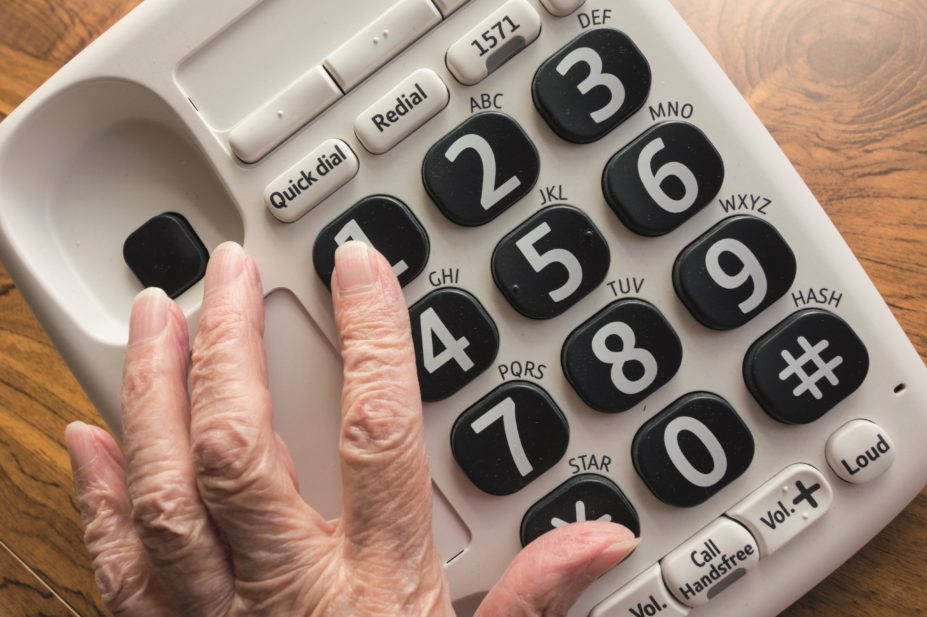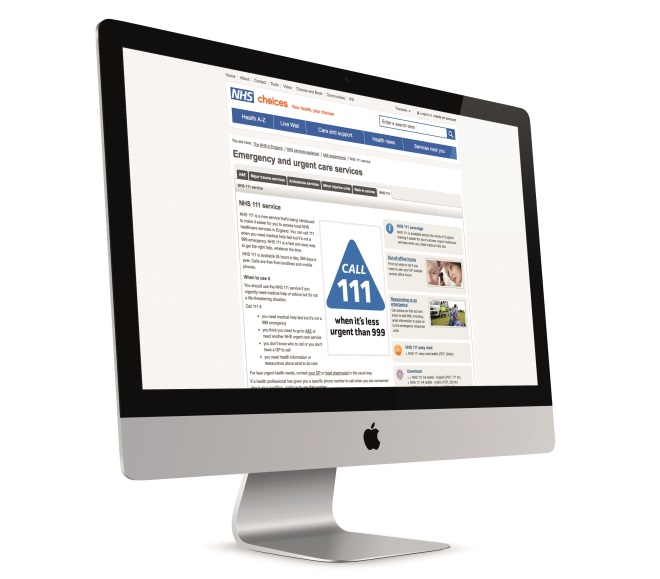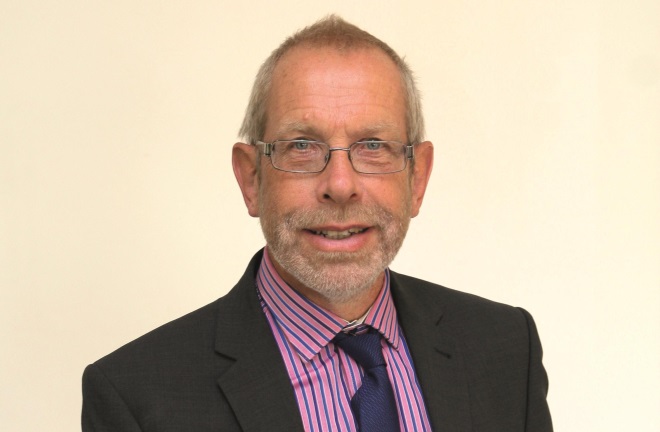
Islandstock / Alamy
“For NHS 111, the ambition is to refer to pharmacy at scale,” says Anne Joshua.
As NHS England’s pharmacy lead for the non-emergency medical helpline, Joshua is pushing for pharmacists to be far more involved in what the service offers.
Less than one caller in 100 to NHS 111 is advised to speak to a pharmacist specifically. This has barely changed since the problematic national roll-out in 2013, when regional providers took over from the nationwide NHS Direct service, or even since the first pilots in 2010.
It means that each month thousands of people with medicines queries or minor ailments are needlessly referred to GP practices, GP out-of-hours services or accident and emergency (A&E) departments, who could have been seen at a local community pharmacy or advised by a pharmacist over the phone.
Why, after nearly four years of lobbying by pharmacy organisations including the Royal Pharmaceutical Society (RPS), is pharmacy as a resource still largely overlooked by NHS 111?
Few disagree that pharmacy, as an accessible community health service, has an important role in solving the urgent care problem in England. Increasing demand for immediate care is placing added pressure on A&E units, GP practices and out-of-hours services. Major A&E attendances have risen steadily over the past decade, and four-hour waiting time targets were regularly breached across England last winter.
NHS England has asked local commissioners to “challenge their urgent care systems, and look at how they are engaging community pharmacy against the urgent and emergency care and seven-day services long-term agenda”. This includes ensuring that “NHS 111 and others signpost and refer to pharmacy for self-care support”.
Speaking at an RPS event in December 2014, Keith Willett, director of acute episodes of care at NHS England, said it was “absurd” that only 1% of people calling NHS 111 were directed to pharmacies. “[Pharmacists] have minor ailment expertise, you have medicines optimisation expertise, you [can help with] missed prescriptions, you have emergency contraception,” he said. “You have a whole host of skillsets within the pharmacy population that we are not currently using. There is an enormous opportunity there.”
Pharmacy input lost
Since at least 2011, the RPS and other pharmacy bodies have lobbied for NHS 111 to direct more patients to pharmacies. Most recently, the Society’s urgent and emergency care campaign, launched in October 2014, called for, among other things, NHS 111 to ensure pharmacists are considered as an option to support urgent and emergency care at a local level, particularly around the treatment of common ailments and emergency supply of medicines.
David Branford, chair of the English Pharmacy Board, blames the switch from NHS Direct to NHS 111 for setting back the use of pharmacy in the telephone service. “What you’ve had with NHS 111 is more or less the complete obliteration of the pharmacy input to it,” he says. “If we hadn’t intervened quite strongly as an organisation — because the RPS invited their senior management to come along and talk about pharmacy — I think it could well have been gone altogether.”
Rob Darracott, chief executive of Pharmacy Voice, says it is “frustrating” that efforts to include “dispositions” for pharmacy — i.e. points at which patients are referred to pharmacy services — in NHS Direct were lost when the “political act” of changing to NHS 111 went ahead. “We’ve ended up with services with not a lot of pharmacy in them,” he says.
Out of sight, out of mind
NHS 111 call handlers gather information about a patient and use triage software called NHS Pathways to suggest a course of action.
Pharmacists as a resource are often overlooked by call handlers simply because NHS Pathways has only a limited number of dispositions — end points in the algorithms — that specifically lead to pharmacy.

NHS data for triaged calls in February 2015 show that 15% of callers were advised to self-care at home. Of these, some are advised that they could receive advice and obtain over-the-counter treatments, such as pain relief or hay fever medication, at a pharmacy, but the degree to which this happens varies between providers and exact figures are not available.
Ambulances were dispatched to 11% of callers and 8% were sent to A&E, but the majority, 63%, were directed to contact primary care services: it is from within this group that less than 1% of all callers are typically directed to speak to a pharmacist.
Just 20 end points in NHS Pathways advise callers to contact a pharmacist: most are for specific, self-diagnosed conditions, such as athlete’s foot or head lice.
Joshua believes there are too few pharmacy end points and the system as a whole is too risk-averse. “Of that 60% [directed to primary care] there’s a fair proportion, I’d suggest, that could go to a pharmacy first for some advice and support,” she says.
In addition, keeping the Directories of Services (DoS) — databases used by call handlers to identify appropriate local services — up to date with accurate information has proved a challenge.
If call handlers are not informed about services provided by local pharmacies, or even when those services are open, they are more likely to arrange a GP out-of-hours appointment or advise patients to visit A&E.
NHS 111 commissioners — primarily clinical commissioning groups — are responsible for keeping the DoS up to date, but the directories are resourced and commissioned very differently between areas.
Clinical involvement in keeping the DoS up to date is also vital, Joshua says. “If you’re mapping community pharmacy or an A&E [unit] to a service descriptor, is that actually the right service? Because otherwise you could find we’re getting seriously poorly people being sent to a pharmacy inappropriately, and likewise the worried well going to A&E,” she says.
A fresh approach
Plans are afoot to address these issues. A series of pilots across England are identifying which types of calls, for which conditions, and at what time of day it would be appropriate to refer callers to community pharmacies.
In Yorkshire, a pilot run by the Yorkshire Ambulance Service in conjunction with Greater Huddersfield Clinical Commissioning Group and Community Pharmacy West Yorkshire Local Pharmaceutical Committee is directing certain types of calls to pharmacies in the DoS, instead of local general practices.
In the West Midlands, patients are now being increasingly directed to pharmacies for medicines advice, such as enquiries about new prescriptions.
Pilots in Aylesbury and Oxford are referring calls about emergency contraception to local pharmacies commissioned to provide this service.
Meanwhile, a large-scale project in London called the Pharmacy Urgent Repeat Medication (PURM) service arranges a pharmacist call-back within 30 minutes. The Pharmacy Emergency Repeat Medication Supply Service (PERMSS) recently ran in the North East, and is being evaluated by Durham University.
Nevertheless, using services common to every pharmacy, not just those specially commissioned, will be the key to wider referral from NHS 111, Joshua argues.
Ensuring pharmacies have the necessary patient information to manage these patients is also crucial. NHS England is developing a pharmacy messaging service that will send details of the patient’s enquiry directly to the pharmacy to which they’ve been directed. Joshua says read/write access to the summary care record would further support this and allow pharmacists to work more closely with GPs around urgent care.
A further four pilots — in the Yorkshire Ambulance Service, Integrated Care 24 in Kent, Care UK in Dorking and London Central & West Unscheduled Care Collaborative — are placing pharmacists inside the NHS 111 call centres.
These pharmacists are better placed to answer medicines queries than the on-duty paramedics, nurses and GPs, further reducing the need for the patient to access other services and allowing the other clinicians to focus on acute symptomatic enquiries.
“The majority of calls are completely closed: they are advised with self-care, with the pharmacists on the phone: that’s it, there’s no need to go anywhere else,” says Joshua.
Pharmacy buy-in is vital
Yet challenges remain: Joshua says some community pharmacists in pilot areas have turned away people directed there by NHS 111, because they haven’t been briefed. “A large number of pharmacies use locums, particularly during the out-of-hours period, and it’s during this period that 111 wants to be sending people [to pharmacies].
“It’s about ensuring those pharmacists know what it means to be taking a 111 referral: we pass the care of that person to the pharmacy on the basis that that person will be picked up and dealt with clinically, and not be sent back to 111 because it’s not convenient, or they weren’t aware of the service.”
But she adds: “We know that pharmacies are absolutely keen to work with 111, and so we’re keen, as the 111 service, [to know] how we can work with [them] better.”

Source: Royal Pharmaceutical Society
David Branford: lack of a national minor ailment scheme could be a barrier to greater pharmacy involvement in urgent care
In addition, the lack of a national minor ailment service remains a barrier to increasing 111 referrals to community pharmacy, according to Branford. “Call handlers have got to be able to deal with these calls as effectively and quickly as they possibly can. If they’re not sure what’s available, or it’s different in different areas, that’s obviously going to reduce their confidence, and make it less likely they’d go down that [route],” he says, adding that the RPS will continue to campaign for a nationally commissioned service in England.
Branford also hopes that a forthcoming national pharmacy reference group for NHS 111 will help by setting out standards for providers. “We want pharmacy to become the preferred destination for urgent repeat prescriptions and common ailments, and we want that to be part of the blueprint for every NHS 111 provider.”
So what proportion of calls to NHS 111 could be handled by pharmacists or at a local pharmacy?
“If we think about NHS Direct,” Joshua reflects, “which was a different service, up to 5% of their calls were being referred to community pharmacies. But NHS Direct only dealt with 5 million calls a year — NHS 111 is already up to 1 million calls a month. Even if we were to up that from 1% to 2%, that’s huge numbers.
“I think there is significant scope for increasing certainly to the level NHS Direct was, and possibly higher than that.”
This will require community pharmacy and 111 to ensure together that the cases referred to pharmacies are appropriate, that pharmacies deal with callers effectively and document what they’re doing.
“For commissioners of 111 services, if we are saying, let’s divert what goes to primary care to pharmacy, the next question is how many [calls] is that? What’s your case mix? How many do you refer on from community pharmacy to another NHS service? Those are the questions that they are really keen to understand.”
NHS England says 111 “directs you to the right local service, first time”. Clearly, with less than 1% of callers invited to speak to a pharmacist, this is not a reality yet.

